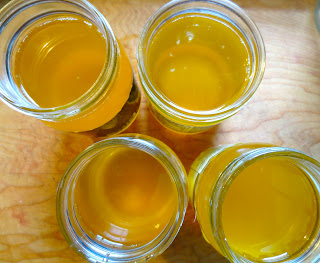 I made some super delicious rumaki last weekend. Yum. This is an amazing appetizer/pre-dinner - or even straight up dinner if you want to go for that much bacon and liver! Plus, it is very 1950's should you be going to some kind of theme party...throw in some deviled eggs and you are all set.
I made some super delicious rumaki last weekend. Yum. This is an amazing appetizer/pre-dinner - or even straight up dinner if you want to go for that much bacon and liver! Plus, it is very 1950's should you be going to some kind of theme party...throw in some deviled eggs and you are all set. I have had rumaki without marinading the liver and I think it tastes just fine. I don't know if the marinade made it extra good this time, but it definitely tasted better. This is also the first time I used water chestnuts, so do what you will. I keep trying to think up something a bit more local and tasty in place of the water chestnuts...radish slices are my best thought so far. I'll let you know how that goes. I also wanted a little more ginger. Next time I will put a little fresh ginger in each rumaki (in addition to the marinade).
Rumaki
5 pieces bacon, halved cross-wise
10 water chestnuts
just under 1/2 lb chicken livers, cut in half (you want about 10 pieces total)
2 T coconut aminos
1 tsp freshly grated ginger
1. Marinate livers in coconut aminos and ginger for 30 minutes-2 hours.
2. Pre-cook bacon in a 400 degree oven. Lay bacon slices in a cookie sheet or cake pan with an edge. Cook for about 10 minutes, until cooked but not crisp. Pour bacon fat off of pan and let bacon sit until cool enough to touch.
3. Lay the chicken liver and a water chestnut in the center of a bacon slice. Add a little fresh ginger if you want, and wrap bacon around filling and secure with a toothpick before placing back on bacon pan. Continue with remaining ingredients until you have 10 bacon wrapped livers.
4. Bake in oven until bacon is crisp and golden, about 7-9 minutes. Serve!





















